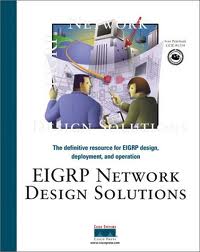Do you need to configure dynamic routing protocol for you network? EIGRP may be an excellent choice. It is a full-featured routing protocol that can grow as your network grows. Let’s learn how to configure EIGRP in the Cisco IOS.
What do you need to know about EIGRP?
Before you configure EIGRP, there are some things you should know about it first. Here they are:
- EIGRP is the Enhanced Interior Gateway Routing Protocol.
- EIGRP is a Cisco proprietary routing protocol based on their original Interior Gateway Routing Protocol. EIGRP can only be used on networks where all routers are Cisco routers.
- The administrative distance for EIGRP is 90 and 170 for internal and external EIGRP, respectively.
What features does EIGRP offer?
- Automatic redistribution of routes between IGRP and EIGRP.
- Ability to turn off and on EIGRP and IGRP on individual interfaces of the router.
- Fast network convergence thanks to EIGRP’s DUAL algorithm (convergence is when all routers know about all the networks that every other router is offering).
- Incremental updates that save network bandwidth and speed convergence.
- Reduced router CPU load, as compared to IGRP.
- EIGRP uses neighbor discovery to find and keep track of neighboring routers. Neighbor discovery uses multicast IP and is not tied to whether or not the the IP network is properly configured.
- EIGRP prevents routing loops on the network
- Supports variable length subnet masks (VLSM)
- Automatic Route Summarization
How do you configure EIGRP in the Cisco IOS?
To configure EIGRP in the Cisco IOS, just follow these steps:
1. Set the bandwidth on your interfaces using the bandwidth command
Router (config-if)# bandwidth XX
(where XX signify the bandwidth of the WAN connection)
2. Start the EIGRP routing process and specify your AS number
Router (config)# router eigrp AS
Where the “AS” in the above-mentioned command stands for Autonomous System number. This number should be the same on all routers.
3. Once you are through this stage, next step is to instruct the router in order to advertise the networks that are directly linked to it. You can do it with the help of command
Router (config-router)# network X.X.X.X
Where X.X.X.X is the network id of a network that is linked directly to the router. You should enter this command for each network directly attached to the router. However, you can, in a single statement, enter the supernet of a group of subnets. When you do that, the router will automatically identify the subnets.
Optionally, you can configure the amount of WAN link bandwidth that an EIGRP router will use with this command:
Router(config-if)# ip bandwidth-percent eigrp XX
Once EIGRP is configured, you can check the status using the show ip route and show ip eigrp commands. Here are some examples:
Router# show ip route
207.71.26.0/28 is subnetted, 1 subnets D 207.71.26.128 [90/8199936] via 10.6.199.1, 1w1d, Serial0/0 10.0.0.0/8 is variably subnetted, 217 subnets, 4 masks D 10.110.100.0/30 [90/6535936] via 10.6.199.1, 5w1d, Serial0/0
Notice the “D” on the left side of the output. All “D” routes are EIGRP routes.
There are a number of show ip eigrp xxxx commands. Here is an example of the “neighbors” version:
Router# show ip eigrp neighbors IP-EIGRP neighbors for process 100 H Address Interface Hold Uptime SRTT RTO Q Seq Type (sec) (ms) Cnt Num 0 10.6.199.1 Se0/0 11 5w1d 20 282 0 887645 Router#
Tips: EIGRP is not too difficult to configure and it can handle even the largest networks.
More Cisco Router and Networking Tips:
OSPF, How to Configure OSPF in the Cisco IOS?





